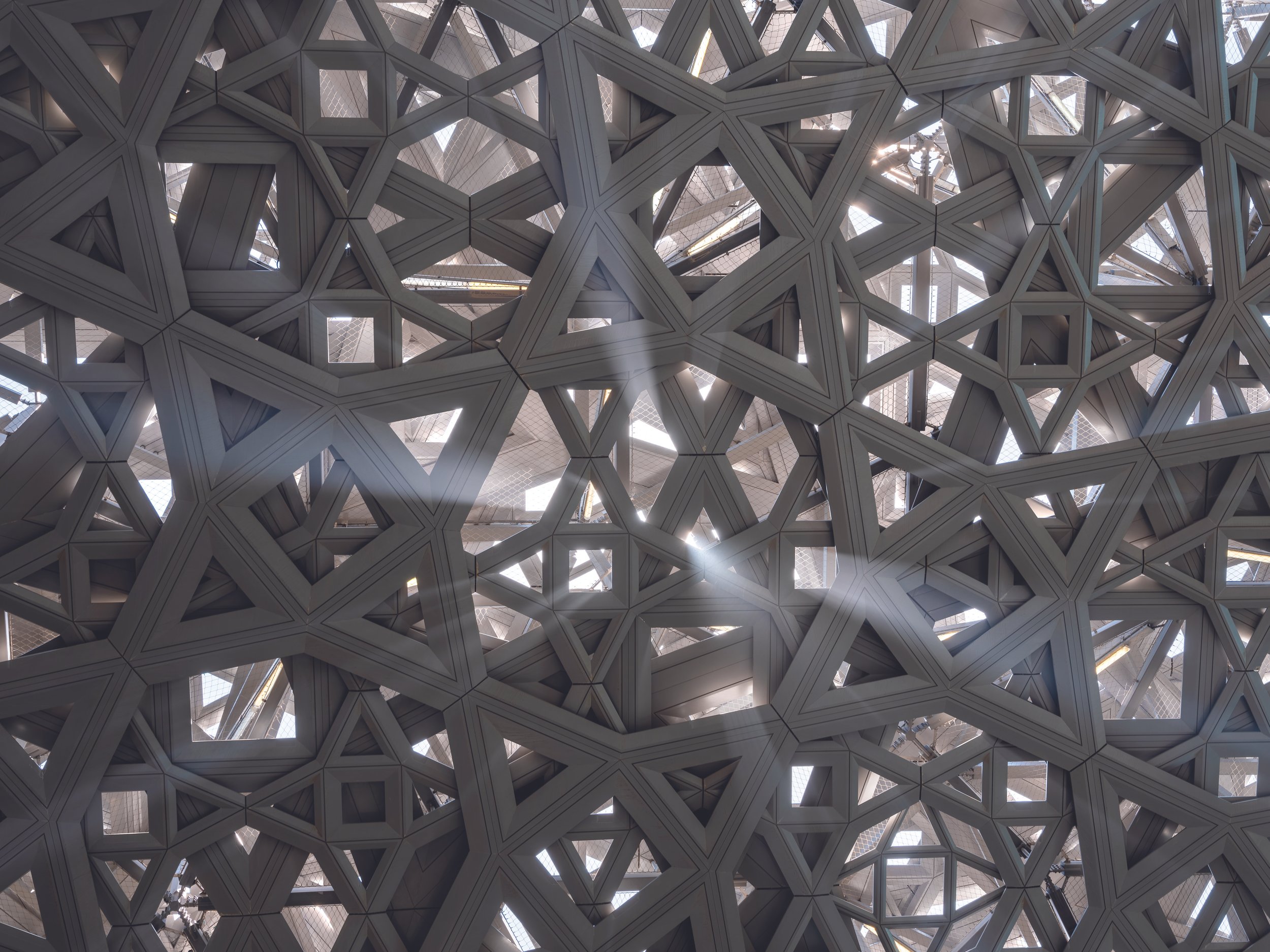Where East Meets West: Louvre Abu Dhabi
Because your next layover in Abu Dhabi doesn’t have to be at the airport.
Words Alain Zedrick Camiling
Photo courtesy of Louvre Abu Dhabi
October 24, 2024
Louvre Abu Dhabi is the product of architect Jean Nouvel's unique vision.
As the capital of the United Arab Emirates (UAE), Abu Dhabi is home to breathtaking architecture and landmarks such as the 35-storey Capital Gate Building or the “Leaning Tower of Abu Dhabi” with an 18-degree incline; the Etihad Towers, a building complex comprised of three residential towers, a corporate tower, and a five-star hotel; and 31 colossal aluminum- clad tablets, each leaning on the other, the Wahat Al Karama (Oasis of Dignity), to honor the people who sacrificed their lives for the UAE; to name a few.
The museum design shows the ever-changing relationship between sun, sea, art and architecture
Also, all-too-familiar film glimpses in Sex and The City 2 (2010); Furious 7 and Star Wars: The Force Awakens (2015); and Dune (2021). Apart from a visual feast of built structure exuding imagination, innovation, and sophistication, this largest UAE Emirate is also known for its cultural spaces. For instance, the Sheikh Zayed Grand Mosque, one of the world’s largest mosques which houses 82 domes, chandeliers with 24-carat gold inlay, and more than 1,000 columns; and the recreation of a Parisian landmark, Louvre Abu Dhabi.
Gold funerary masks on display include an artifact from Butuan, on loan from Ayala Museum. Photo: Alain Zedrick Camiling.
ORIGINS AND SPRAWLING ROOTS
The museum is an intergovernmental effort and agreement between France and the UAE in 2007 which cost around $1.2 billion, allowing Abu Dhabi to use the name “Louvre” and loan art from around 13 to 17 French cultural institutions such as Centre Pompidou, Musée d’Orsay, and the Louvre; and management assistance and guidance for 30 years. A recent tally in early 2024 reports a 5-million visitor milestone of the Louvre Abu Dhabi, welcoming visitors from all parts of the world since its 2017 inauguration.
Children's Museum.
While the museum takes pride in its French architect and Pritzker Prize-winning Jean Nouvel-designed architectural marvel, the construction project lasted for 10 years, which drew reprovals for having migrant workers involved in its construction, being connected to histories and allegations of exploitation of workers in the region, as reported by various media entities. Nouvel eventually defended this, pointing to better conditions of the workers compared to other countries.
A floating dome of light and shade
AN ARCHITECTURAL GEM IN AN ISLAND
The museum is located at the heart of cultural district Saadiyat Island, an ongoing project targeted to finish by 2025, where the Zayed National Museum and Guggenheim Abu Dhabi (both designed by Pritzker Prize-winning architects), and teamLab Phenomena Abu Dhabi will all be located.
Louvre Abu Dhabi is surrounded by water, where visitors can arrive by land or sea
From afar, Louvre Abu Dhabi gives a floating impression, inspired by Arabic cupolas. Its 180-meter-diameter dome has 8 overlapping layers of interlocking aluminum and steel, creating a complex geometry of more than 7,800 stars, sheltering 55 buildings of the museum in total, and providing shade for its public spaces. The buildings/pavilions give an impression of a contemporary Arab medina, allowing its visitors to navigate it thoroughly and comfortably. The dome, on the other hand, has a life of its own playing cleverly with light, sunlight-pierced in daylight and emitting a magnificent constellation of stars during nighttime. In terms of its galleries, there are 23 devoted to its permanent collection and a massive 2,000 sqm. changing exhibition space, a waterside restaurant, and a children’s museum.
Inside a museum gallery
Apart from being designed by a sought-after French architect and serving as a strong example of cultural diplomacy between France and the UAE, the museum speaks to and acts as a cultural bridge to its diverse publics through its expanding collection spanning various cultures, periods, and regions, explicating shared human experiences and cultural exchanges.
Just like any other global museums, its extension efforts probe education and research through expansive public programming and pedagogical initiatives that promote the study and appreciation of art, culture, and history.







